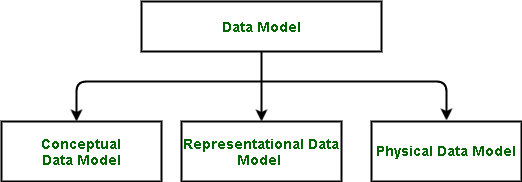Dbmss Are Used Primarily for Modeling Data
Primarily geared to business applications CS275 Fall 2010 34 Newer Data Models. Two of the major challenges business users face when using big data are fin ding the information they need to make decisions and knowing that the data they have is valid.

Data Models In Dbms Geeksforgeeks
Quizlet is a lightning fast way to learn vocabulary.

. View quiz_5docx from CSIS 100 100 at Liberty University. A database data collection with DBMS is known as a database system. They store current and historical data in one single place that are used for creating analytical reports.
The term is correctly applied to data and the supporting data structures but not to the database management system or DBMS. DBMS based on this model are usually very easy to understand by the user as they pertain to a single project in most cases. Database management systems DBMSs are specially designed applications.
The logical data models forms of DBMs are the mostly the crudest possible way of data presentation. A Brief History of Data Modeling. Big data refers to large-scale data that is generated in digital environment.
The DBMS manages incoming data organizes it and provides ways for the data to be modified or extracted by users or other programs. Question 1 2 out of 2 points DBMSs are used primarily for modeling data. The value of data modeling.
DBMSs may be built around a. Graph DBMSs or graph-oriented databases are intended to render visual representations of data. Later sections in this document will explain why we believe the likely roles for NoSQL and Big Data are broadly misunderstood today but there is no question that market enthusiasm for these loosely-defined domains has.
A database must reflect the business processes of an organization. Codd proposed the relational model. True False Question 7 1 1 pts One of the final steps in installing and using a large database involves telling the database management system DBMS the logical and physical structure of the data and the relationships among the data for each user.
At this point in database development there were two main data models being used. Today most organizations use the traditional approach to data management where multiple information systems share a pool of related data. One of the final steps in installing and using a large database involves telling the database management system DBMS the logical and physical structure of the data and the relationships among.
There are many reasons for doing. It was then that Edgar F. The graph model uses edges to define relationships between nodes Most graph DBMSs are multimodal which means they include other databases such as key-value store and document store to broaden the range of data types they support.
Data modeling and why data models are important. Apart from the Relational model there are many other types of data models about which we will study in details in this blog. This remained the case until 1970.
The Future of Data Models Hybrid DBMSs Retain advantages of relational model Provide object-oriented view of the underlying. Technically speaking it is a software system that uses a standard method of cataloging retrieving and running queries on data. Question 6 1 1 pts DBMSs are used primarily for modeling data.
Place on database management systems DBMSs. One of the final steps in installing and using a large database involves telling the database management system DBMS the logical and physical structure of the data and the relationships among. A database must reflect the business processes of an organization.
The most popular example of a database model is the relational model or the SQL approximation of relational which uses a table-based format. Some of the Data Models in DBMS are. Though there are many data models being used nowadays but the Relational model is the most widely used model.
A database model is a type of data model that determines the logical structure of a database and fundamentally determines in which manner data can be stored organized and manipulated. A data warehouse is a subject-oriented integrated time-varying non-volatile collection of data that is used primarily in organizational decision making1 Typically the data warehouse is maintained separately from the organizations operational databases. This data is typically organized to model aspects of reality in a way that supports processes requiring this information.
Data Warehouse is a system used for reporting and data analysis. Hardware database accelerators connected to one or more servers via a high-speed channel are also used in large volume transaction processing environments. DBMSs are used primarily for modeling data.
In short a DBMS is a database program. DBMSs are found at the heart of most database applications. This model departed from the norm by insisting that applications should.
Today most organizations use the traditional approach to data management where multiple information systems share a pool of related data. Logical and other mainframe data models. DBMSs are used primarily for modeling data.
DBMSs are used primarily for. This big data. The hierarchical model used by the IBM IMS system and the Codasyl model implemented in products like IDMS.
The act of Data Modeling defines not just data elements but also the structures they form and the relationships between them. DBMSs are used primarily for modeling data. Data Modeling is the act of creating a data model physical logical conceptual etc and includes defining and determining the data needs of an organization and its goals.
RAID is used for recovery of data if any of the disks fail. DBMSs are used primarily for modeling data. It is central repositories of integrated data from one or more disparate sources.
E Fals Question 2 2 out of 2.

Data Modeling Tools How To Simplify Data Management

There Are Four Main Types Of Database Management Systems Dbms Manualzz

Comments
Post a Comment